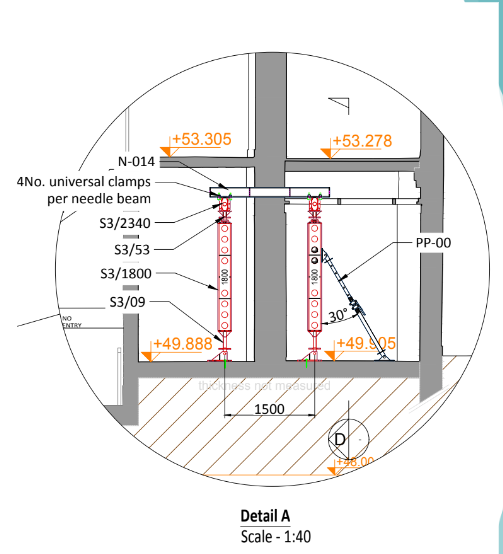The requirement to check temporary works is designed to increase the safety and effectiveness of designs and reduce the risk of temporary works failure.
There is a perception that temporary works are subject to a greater scale of checks than permanent works.
Based on our experience, here are some of the reasons that in general Temporary Works are subject to a more rigorous checking process than permanent works.
There Have Been Lots Of Disasters In The Temporary State
The development of processes for checking of temporary works started in response to a series of fatal temporary works failures in the 1960’s and 1970’s.
This triggered the publishing of the Bragg report; that identified the need for the control of temporary works and their review by a “fully qualified engineer”.
Whilst the Bragg report focused on falsework, the scope of checking has expanded to include all temporary works. The current process for checking temporary works is clearly defined in BS5975 which is regularly reviewed and updated.
Construction/Demolition Is Fraught With Issues
When designing temporary works, there are a number of different variables and potential points of failure that require consideration and review.
These can include
- Permanent structures in the temporary condition
- Large loads being applied to temporary structures (i.e. Tower cranes, mobile cranes, falsework etc)
- Lack of information on the historical structure
- Poor permanent works design making construction more hazardous
Project Pressures
On modern construction sites there are a number of pressures and challenges that can increase the risk of temporary works failures.
A common issue can be the fact that Temporary Works are not considered and scoped during the tender process. This can exacerbate time and cost pressures for the creation and implementation of temporary works.
Extended Supply Chains Leading To Missed Scope
A more recent issue that increases the importance of checking temporary works is the extension of supply chains leading to missed scope.
This can mean that the design of temporary works may be subcontracted multiple times through the supply chain and have a limited scope that does not consider the impact upon the whole project.
A solution within the standards is the appointment of a lead checker for temporary works who takes responsibility across the whole project.

